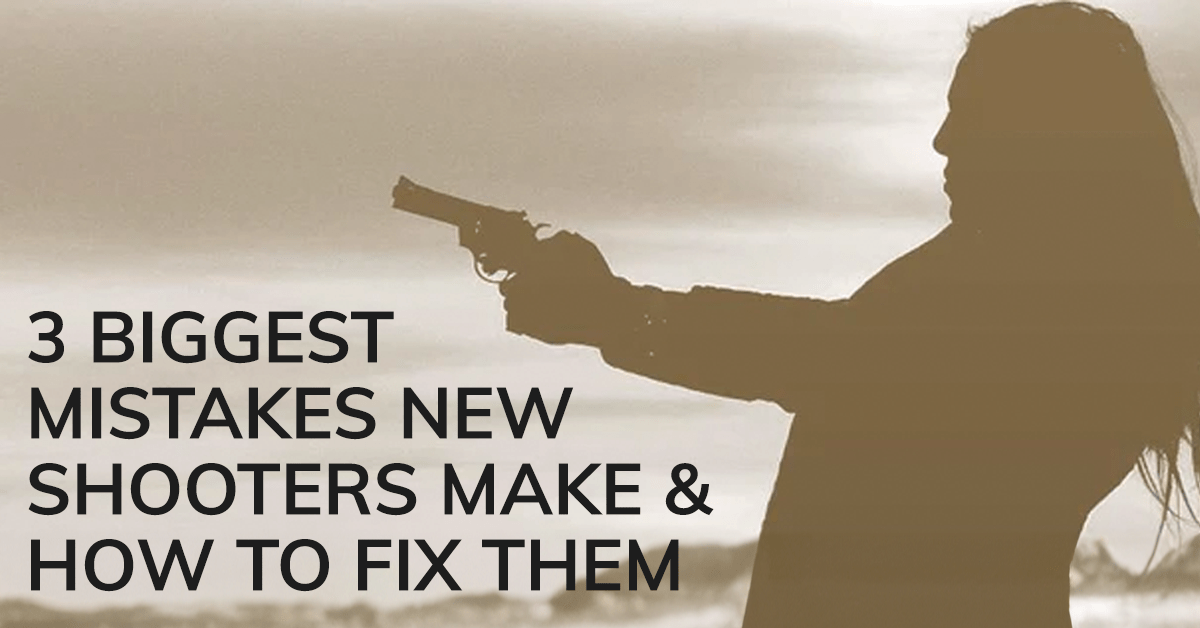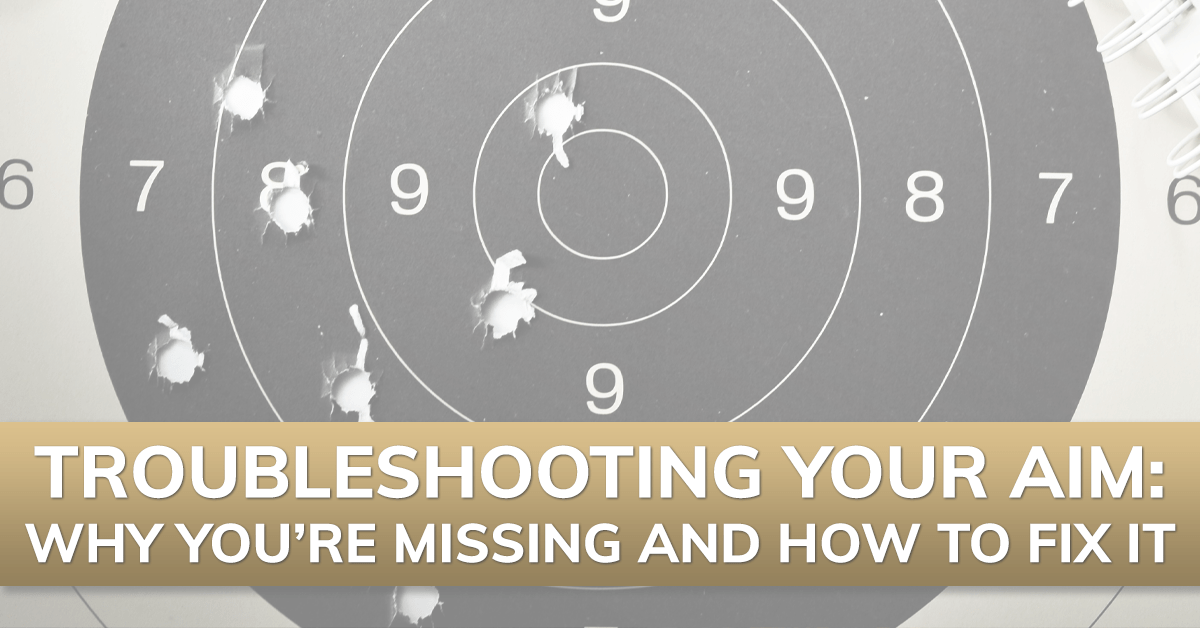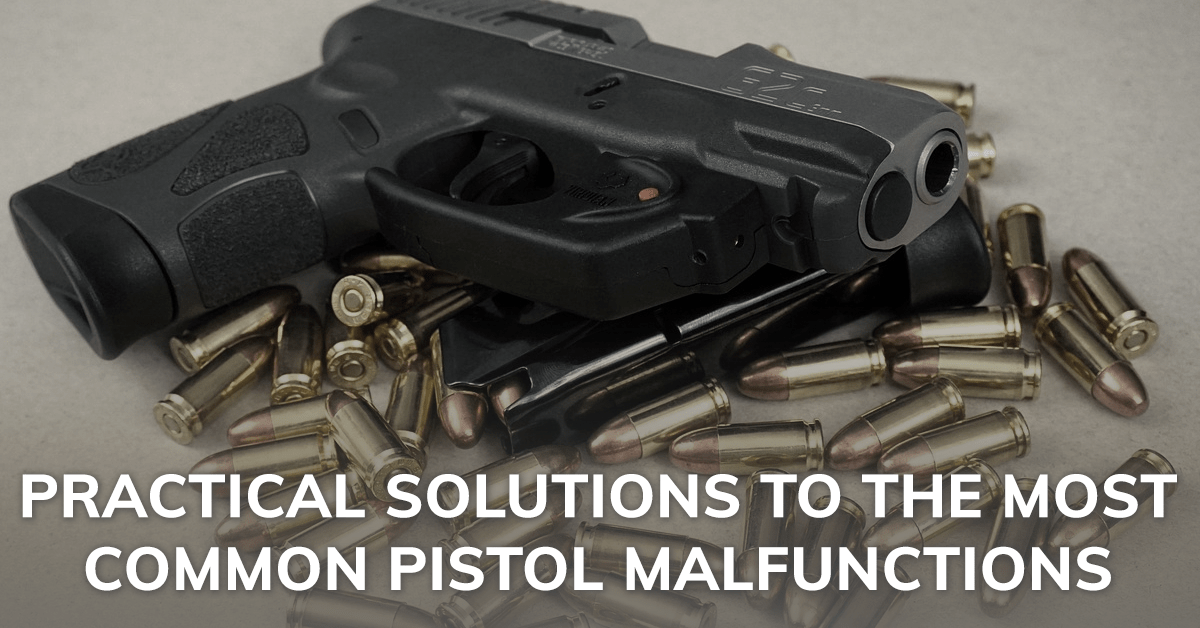Orders Over $100 Ship FREE (USA)!
Orders Over $100 Ship FREE (USA)!
CONCEALED CARRY
(Apparel with holster pockets or concealed-carry features)
PARTS & GEAR
RANGE STYLE
Gift shopping & not sure about size or style? Give a gift card instead!
GIFT IDEAS
EXPLORE
BFCM Sale 20% Off every item! EXTENDED
Black Friday & Cyber Monday EXTENDED: Indulge in Luxury, Pay Less.
How to Fix the Most Common Shooting Mistakes
4 min read
Making mistakes as a new shooter is perfectly normal. We've all had trouble getting shots to go exactly where we want them to, which can be frustrating and demotivating at times.
However, there are some steps you can take to correct the most common shooting mistakes. By following these tips below, you'll be on your way towards accurate shots in no time!
Poor Trigger Control
Trigger control is one of the most difficult shooting fundamentals to master. Poor trigger control results in your shots missing your target and it's most often caused by jerking the trigger or flinching when firing a shot.
Jerking the Trigger is when you're about to take a shot and at the last second, you yank on the trigger, which disrupts your sight alignment and your bullet misses the mark. Flinching has the same result as jerking the trigger and it is usually caused by anticipating your shot.
Flinching or jerking the trigger happens for a couple of reasons. When your finger finishes taking up the slack in the trigger, your subconscious senses the gun is about to go bang. When you sense a loud bang is coming, you tense up and pull harder. You may also subconsciously be trying to assist with the shot by pushing your gun towards the target a bit to help it get downrange.
How to fix poor trigger control: Dry fire is a great way to get past a flinch. To dry fire, make sure there is no ammunition anywhere around, with the gun pointed in a safe direction, rack the slide, get your sight picture and pull the trigger. Pull the trigger slowly and steadily to feel how the trigger on your firearm feels, how heavy it is, and how far the shot travels forward before it breaks. Repeat that several times often to smooth out your trigger pull.
Incorrect Grip
Incorrectly gripping the gun is another common issue new shooters face. Most grip-related shooting problems can be traced to a lack of hand strength or poor form, and it's most likely your form. A poor grip can prevent you from making accurate shots, even if you are doing everything else right.
How to fix an incorrect grip: Make sure you gave a good grip on your gun by wrapping both of your hands around the grip and move your strong hand up as high as possible until there's no gap. Then, make sure your thumbs are rolled all the way forward so they are pointing toward your target. When you're shooting, your grip should be strong enough to keep the sights from jumping around, but loose enough that you're not overgripping, which causes poorly placed shots. This is something you need to experiment with to see what works best for you. If you're working on your grip and you start having malfunctions, that's a good sign your grip is too loose.
A Bad Stance
When you hear the word "stance", it refers to your body position while you're shooting. When you're in an improper stance, it's much tougher to get your shots on target and follow up shots will be even more off-target. A bad stance can mean your feet are too close together or too far apart, or you're leaning back while shooting.
How to fix a bad stance: When you're shooting, your feet should be under your shoulders, your knees should be just slightly bent, and you should have a slight lean toward your target. Since all bodies are different, it's important to make your own adjustments to see what works well for you
Poor Sight Alignment or Picture
Sight alignment or sight picture refers to how you align the two sights on your handgun in a way that you will hit your intended target. If you're sights aren't lined up correctly, you'll never make your shot
Your gun most likely has a rear sight, which is the sight on the slide the furthest back and closest to you. The most common rear sight is a U shape. The other sight is the front sight, which is the sight on the end of the slide closest to the target. The key is making these work together to line up properly.
How to poor sight alignment: To get a proper sight alignment, look through the opening in the rear sight and line up the front sight in the space of the U. Poor sight alignment can also happen when you're not using your your dominant eye, so make sure you know which one of your eyes is dominant. If you've never checked, take a look at our guide to finding your dominant eye.
If you think you're lining up your sites correctly and you're still having issues, your sights may be misaligned. Take your gun out to the range and "zero" your sights by resting on a shooting bag or using a benchrest for stability. If you find an issue, adjust them, if possible. If you don't have adjustable sights, you may need to take your firearm to a gunsmith for adjustment.
If you're still having issues with sight alignment, you may need to have your eyes checked. Our eyes can change, so if you're still having issues, get your eyes checked and make adjustments from there.Safety Issues
When we are new to shooting, we don't know what it means to be safe with a gun because we haven't learned yet. This can lead to safety infractions that make you and those around you less safe. Anytime you are shooting or have your firearm out, it's imperative you follow several rules to ensure you're not being a hazard.
How to fix gun safety issues:
Most gun safety issues are not intentional, but they happen because someone doesn't know or isn't following the four rules of gun safety. If you know and follow these rules, you can avoid committing any safety gaffes:
- Never let the muzzle cover anything that you are not willing to destroy
- Keep your finger off the trigger until your sights are on target and you have made the decision to shoot
- Be sure of your target and what lies beyond it
In addition to these tips, make sure your firearm is properly cleaned and maintained so you'll be able to rely on it when competing, shooting recreationally, or if you ever need it to defend yourself.
Also in Skill Building: Troubleshooting

3 Biggest Mistakes New Shooters Make & How To Fix Them
4 min read
Here are a few of the biggest mistakes new shooters make, along with some friendly advice on how to correct the issues.

Troubleshooting Your Aim: Why You’re Missing Your Target and How to Fix It
3 min read

Practical Solutions to The Most Common Pistol Malfunctions
4 min read

